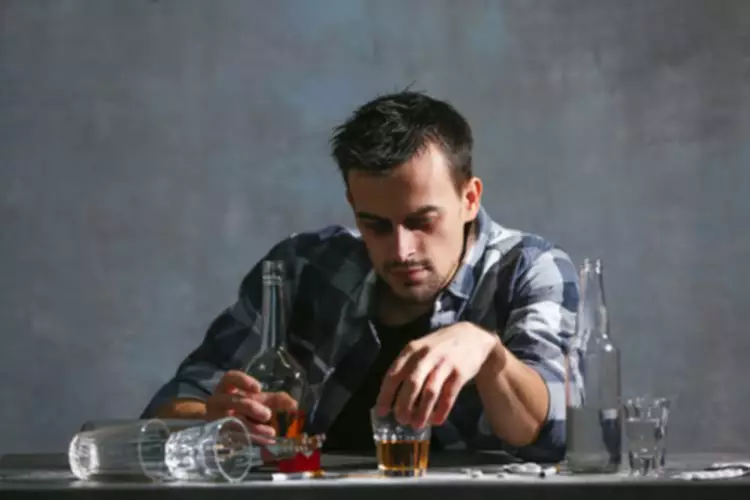7 Rappers Who Are Sober

The New Orleans rapper has been sippin’ and spittin’ about purple drank for years. He first came out about his addiction in 2008, but rumors of the toll it takes on his life continue into 2013. When he landed in a coma after suffering from severe seizures a few months ago, everyone pointed at a sizzurp OD as the cause, though Wayne claims to have suffered from epileptic seizures his whole life. In 1984, Grandmaster Melle Mel released “White Lines (Don’t Do It),” an anti-drug message disguised as a party anthem. Shortly thereafter, Kool Moe Dee doubled down on the message in “Crack Monster,” a song dedicated to the “devil” that was encroaching on life in black America.
Raising Awareness for Addiction, Mental Illness
In 2020, only 6.5 percent of people with substance abuse disorders received treatment. African American and Native American people had the highest rates of fatal overdoses in 2021. The drugs were thought to be a mixture for“purple drank,” a combination of codeine and promethazine, a commondrug reference in southern hip-hop culture. Valium and PCP were also found inhis blood during the autopsy. While it’s a misguided notion rappers with drug addictions to squarely place blame on rappers, or the even broader stroke of “Hip Hop” for brandishing drug culture, a positive reflection in the public eye shouldn’t go unnoticed. Big dog DMX is tough as barbed wire and slicker than an oil spill, but even he’s had a hard time fighting addiction.
Why are Black men now at higher risk?
- Many artists are now starting to sing about their struggles with these drugs rather than “flexing” to show how much they make from selling drugs.
- While cocaine dominated the first half of the 2000s, another trend was brewing.
- After serving aprison sentence, he returned to rapping and was reportedly working on acollaboration with Too Short when he was found unresponsive in his hotel roomon December 4, 2007.
- He passed away on September 7, 2018, at the age of 26 years old.
- Some lyrics directly explain his usage, like “Just went through a half ounce of coke/ Blood pourin’ all out my nose/ Don’t tell my mom I got a drug problem” (lines 22–24).
In an interview with Vibe, he explained why he stopped using drugs around that time. “…I actually looked in the mirror and saw myself deteriorating. I was like man we’re doing too much. Way too much.” Along with being sober, Andre 3000 has also been a vegetarian for nearly two decades. Unlike some of his fellow Odd Future members, Tyler, The Creator made a deliberate decision to not smoke or drink. In an interview with Fantastic Man, he recalled when he told someone to stop smoking in the studio. He further expressed that he has never once wanted to get drunk. Not many rappers have been in rehab twice, but Famous Dex has.

Lil Pump
His death was ruled an accidentaloverdose of fentanyl and Xanax. Some of today’s biggest names like Lil Wayne and Kid Cudi, among others, have spent much of their careers looking for a way to cope with their own personal traumas. Many times, the glamorization of substance use is in their rhymes, peppering hooks with one-liners https://ecosoberhouse.com/ that speak to those internal struggles. But despite drug culture’s influence over music and trends, a number of the game’s favorite artists embrace sobriety. Legendary southern rapper Pimp C also tragically died because of a drug overdose.
- In songs and interviews, Jay-Z has discussed the ubiquity of drugs he saw while growing up in Brooklyn in the 1980s.
- “…I actually looked in the mirror and saw myself deteriorating. I was like man we’re doing too much. Way too much.” Along with being sober, Andre 3000 has also been a vegetarian for nearly two decades.
- Others have expressed concern about drug culture, emphasizing the negative consequences, including addiction.
- The article “Hip-hop and Drugs” describes Jones’ arrest for driving with marijuana and cocaine on him and also mentions his overdose in the studio in 2001 (3).
- In Washington D.C., Black men are over nine times more likely to die from a drug overdose, a disparity similar to that of other urban areas in the region.
- Not to mention the fact that their fanbase is probably made up of even younger, even more impressionable listeners.
Drug Trends in Rap Culture

He’s worked closely with XXXTentacion and PnB Rock, whose lives were both cut short by senseless murders. It permeates the music, it’s imprinted in the culture and recently, it’s been having deadly consequences for rappers. Since molly’s fading popularity and the increase in codeine mentions, other over-the-counter and prescription drugs have crept into hip-hop’s woozy landscape.

Expand lifestyle menu
“Jump” stayed at No. 1 on the Billboard Hot 100 chart for eight weeks in 1992 and the duo’s album, Totally Substance abuse Krossed Out (1992), went multiplatinum. The two also started a short-lived trend of wearing clothes backward. While the group had two semi-successful studio albums, Kelly attended school to become a studio engineer and remained working in music until his death in 2013. While some suspected that he was suffering from cancer, he never confirmed it. Chad Lamont Butler (December 29, 1973 – December 4, 2007),better known by his stage name Pimp C, was an American rapper andrecord producer.
Stay Sober: Rappers Who Don’t Smoke Or Drink
- One person with true empathy for the cause is Juice Wrld’s mother, Carmela Wallace.
- Long-term use of the drug has been linked to temporary paranoia, suicidal thoughts and worsening of symptoms of schizophrenia.
- Mobile phone footage of the star handling a bag of cannabis and allegedly complaining about the poor quality was also played to the judge.
- In 1984, Grandmaster Melle Mel released “White Lines (Don’t Do It),” an anti-drug message disguised as a party anthem.
- On “Otherside,” Macklemore raps about Lil Wayne being a major influence of his personal codeine addiction.
Chris Kelly, better-known as Mac Daddy of ’90s kid-hop crew Kris Kross, had a hard time after puberty. He turned to drugs to kill the pain of forever being remembered as a child star, so we must assume, and even though the crew was getting back on the road, it wasn’t enough excitement to save him. The 34-year-old was found dead of a cocaine and heroin overdose in his Atlanta home earlier this year. He was a Southern hip-hop icon, and he lived the life he rapped about. A founding member of UGK, Pimp C helped pave the way for the Dirty South revolution and gave the game some of its trillest tracks, but his reign was cut short when addiction got the best of him.

Juice WRLD was a big name artist who had a tragic ending, due to drugs. He was an advocate for mental health, especially for the black community (“Juice WRLD” 12). He talked about his drug usage from an early age, seeing as his career skyrocketed when he was about 19 years old.
